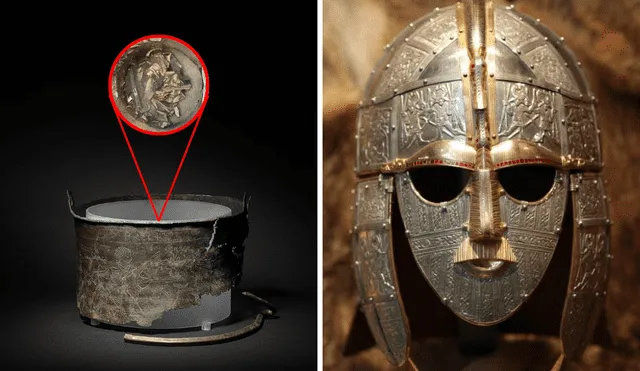Anglo-Saxon bucket buried 1,400 years ago unearthed in England: what contents does it hold?
Archaeologists uncover the base and contents of a rare Byzantine bucket used in an Anglo-Saxon cremation burial at Sutton Hoo, shedding new light on the burial customs and status of the individual interred.

Archaeologists at Sutton Hoo, a renowned Anglo-Saxon burial site in Suffolk, England, have made a groundbreaking discovery regarding the mysterious Bromeswell bucket. This sixth-century Byzantine vessel, previously found only in fragments, has now been recovered in full base form with cremated human and animal remains inside, providing unique insight into its burial use.
The Bromeswell bucket, crafted in Antioch in modern-day Turkey, traveled hundreds of miles before ending up in an Anglo-Saxon cemetery. This discovery marks the first known example of such a bucket being repurposed as a cremation vessel, highlighting the elevated status and complex cultural connections of the person buried.
Rare burial find: Cremated remains and grave goods inside the bucket
The base of the bucket and its contents were discovered in a block of soil during last summer's excavation. In addition to animal remains that were probably from a horse or other large animal, detailed CT scans and X-rays showed cremated human bones, including pieces of an ankle and skull. Since horses were frequently included in early Anglo-Saxon cremations, these findings imply that the person who was cremated had a high status.
Inside the bucket, the team also discovered an antler comb that had not been burned and was remarkably well-preserved. The comb, a typical grooming implement in Anglo-Saxon cemeteries, might contain antiquated DNA that could provide additional insight into the identity of the deceased. The bucket's function as a significant funerary object is demonstrated by the presence of both cremated remains and personal belongings.

ALSO SEE: China surges ahead in rooftop solar: Achieves in 3 months what Europe takes 3 years to match
Origins and significance of the Bromeswell bucket
The bucket's base, which was made with cold hammering, a method popular in the Byzantine Empire, most likely came to Britain via Saxon mercenaries or as a diplomatic gift. Its repurposing as a cremation vessel at Sutton Hoo signifies the period's intercultural exchanges as well as the person's high status.
To learn more about the burial season and the surrounding environment, experts are still examining fibers and plant remains discovered with the burial. By fusing luxury artifacts from the classical world with northern Anglo-Saxon funerary customs, this discovery gives Sutton Hoo's intricate archaeological record a new dimension.












